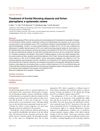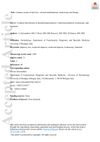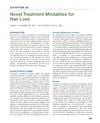Numerical Descriptor Computation of Alopecia Drugs Using Com-Polynomial
November 2025
in “
International Journal of Apllied Mathematics
”

TLDR Numerical methods help analyze alopecia drugs' properties effectively.
This document discusses the use of numerical descriptors, specifically CoM-polynomial and degree-based topological coindices, to analyze the physicochemical properties of drugs used in the treatment of alopecia, a condition affecting one million people in India. The study focuses on medications such as Minoxidil, Finasteride, Dutasteride, Biotin, Triamcinolone, Spironolactone, Ritlecitinib, Baricitinib, Dithranol, and Sulfasalazine. These numerical methods are particularly useful in resource-limited settings, aiding in the comprehensive investigation of these drugs' properties.




